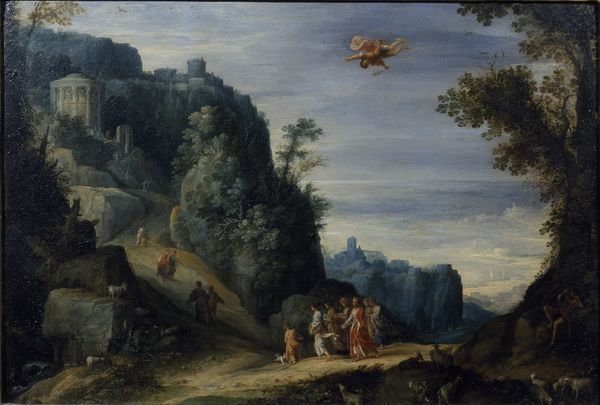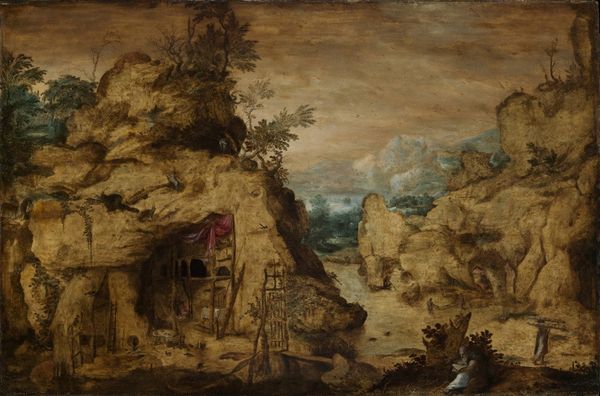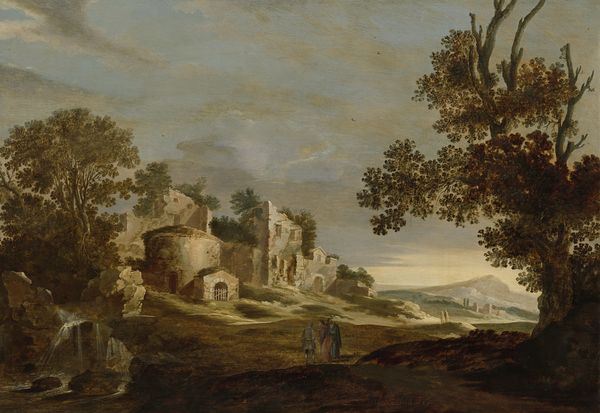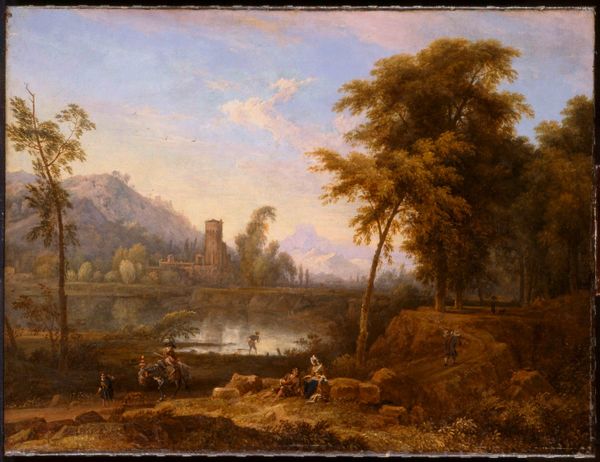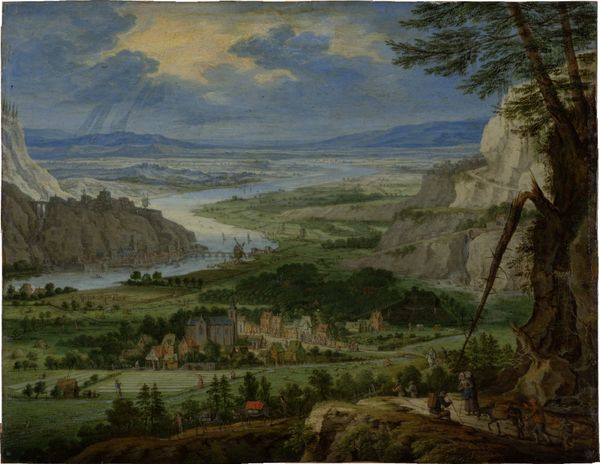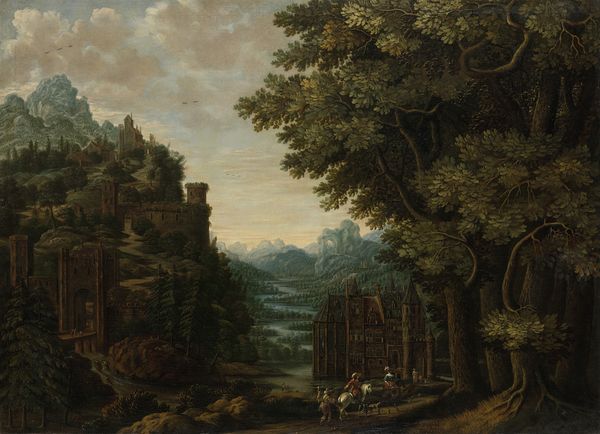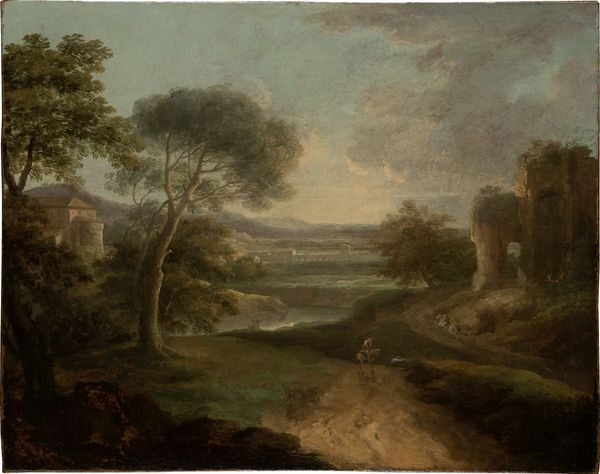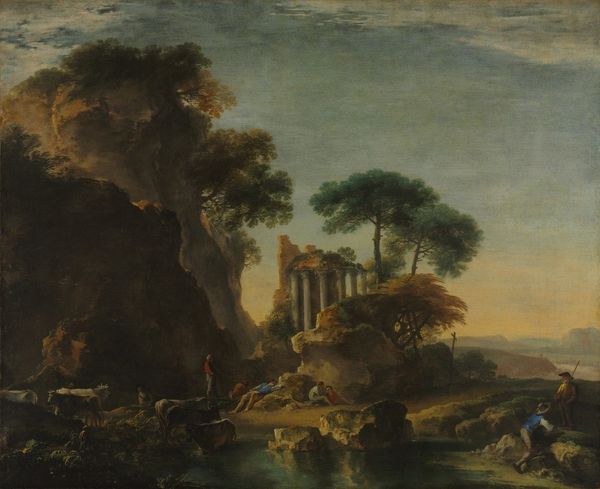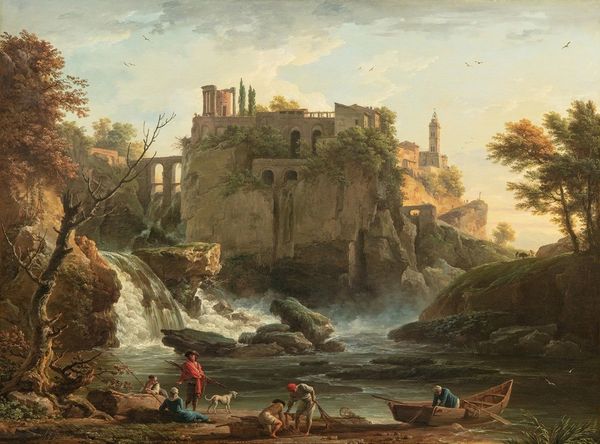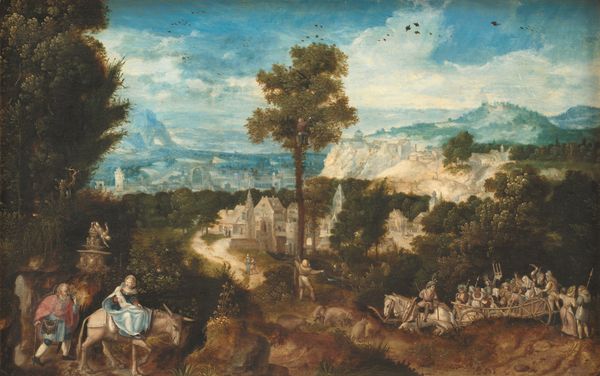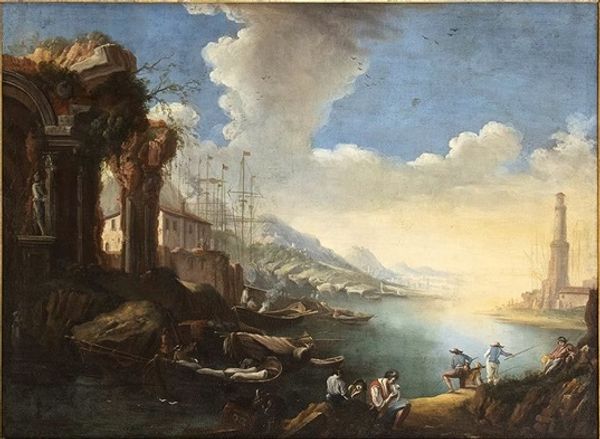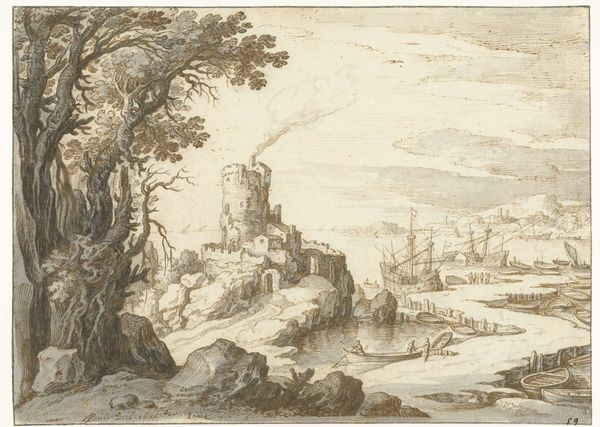
Coast Landscape with the so-called Temple of Sibyl at Tivoli 1620s
0:00
0:00
painting, oil-paint
#
baroque
#
painting
#
oil-paint
#
landscape
#
oil painting
#
cityscape
#
italian-renaissance
#
realism
Dimensions: 28.5 cm (height) x 39.8 cm (width) (Netto)
Curator: We're standing before "Coast Landscape with the so-called Temple of Sibyl at Tivoli," an oil painting dating from the 1620s, crafted by Willem van Nieulandt the Younger. Editor: Immediately striking, isn't it? A kind of subdued, earthen palette pervades the work, creating an atmosphere that's both calming and tinged with melancholy. There's a definite textural emphasis with what appears to be a visible handling of the medium, lending a certain grittiness to the composition. Curator: Note how the artist skillfully employs chiaroscuro, particularly in the rendering of the architecture and landscape. The strategic placement of light and shadow lends a profound depth to the scene, and reinforces its overall sense of theatricality. The so-called Temple of Sibyl dominates the upper left, its silhouette distinct against the hazy sky. Editor: Right, but it's the juxtaposition of the dilapidated temple ruins with the everyday maritime activities along the shore that holds my interest. You have figures mending nets, boats beached for repair. I am wondering what was it like making oil paints in the 17th century and the materials the artist had access to. Were pigments locally sourced, influencing the color choices in this painting? Curator: That interplay you observe hints at the transient nature of human achievement juxtaposed against the enduring backdrop of nature. It’s a Baroque sentiment, inviting meditation on time and mortality. Structurally, the composition utilizes diagonals to guide the eye—from the lower right corner towards the distant cityscape, which establishes depth within the scene. Editor: Absolutely. Considering that Nieulandt spent a significant period of his career in Rome, his painting likely represents the fusion of Italian and Northern European sensibilities. There's a certain tension created from what looks to be rough brushstrokes along the coastline; did Nieulandt mix ground glass into his paint to get that coarse texture, I wonder? It contrasts with the more finished, classical appearance of the Temple, creating an almost jarring dichotomy that invites us to confront notions of value. Curator: The Italian Renaissance ideals clearly linger; one could perceive it within the work’s structured composition and the thematic treatment of classical antiquity as a subject, which the Temple emphasizes, of course. I read this painting, fundamentally, as an essay about how our experience changes through spatial relations. Editor: For me, it’s the contrast in materiality— the refined Temple versus the earthy depiction of labor — that lends "Coast Landscape" its true depth and makes you ponder its relationship with production and purpose. Curator: A fascinating synthesis of form and context, indeed! Editor: And also a fascinating window into artistic techniques that speak volumes, if we take a closer look.
Comments
No comments
Be the first to comment and join the conversation on the ultimate creative platform.
